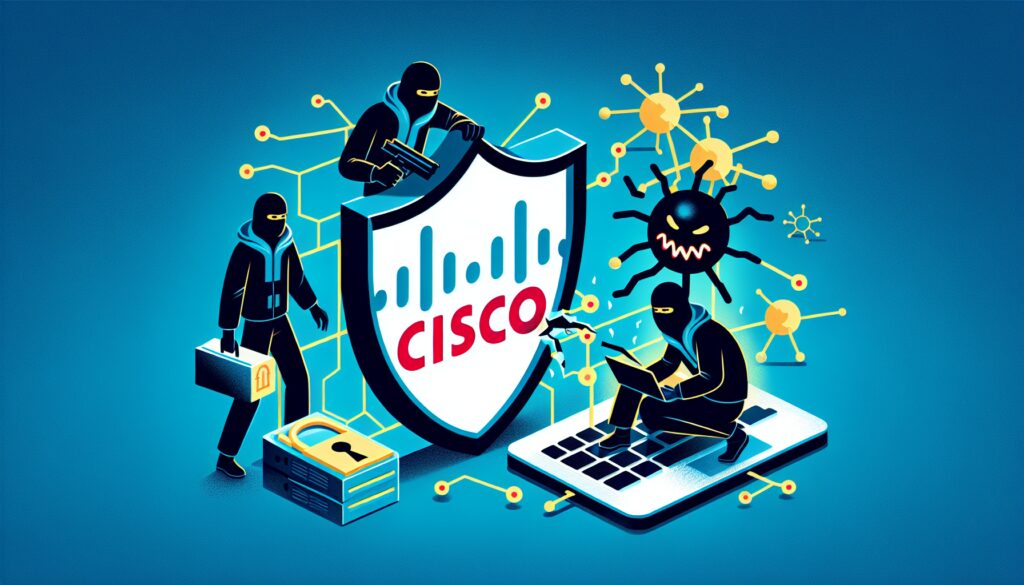La sicurezza informatica è diventata una priorità assoluta per le aziende di tutto il mondo. Con l’aumento del numero di attacchi informatici, è importante essere sempre aggiornati sulle ultime minacce e su come proteggersi. In questo articolo, esamineremo una recente scoperta di una campagna di cyber-spionaggio cinese che sfrutta una vulnerabilità critica in Cisco.
La Scoperta
Secondo un recente articolo pubblicato su The Hacker News, i ricercatori di sicurezza informatica hanno scoperto una campagna di cyber-spionaggio cinese che sfrutta una vulnerabilità critica in Cisco. La vulnerabilità, indicata come CVE-2024-2151, consente agli hacker di eseguire codice arbitrario sul dispositivo interessato, con privilegi di amministratore.
La campagna di cyber-spionaggio, soprannominata Operation CuckooBees, è stata attribuita al gruppo di hacker cinese APT27. Il gruppo è noto per aver condotto attacchi informatici a scopo di spionaggio contro aziende e governi di tutto il mondo.
L’attacco
L’attacco inizia con l’invio di un’e-mail di phishing all’obiettivo, che contiene un allegato dannoso. Una volta aperto l’allegato, il malware viene installato sul dispositivo della vittima. Il malware then establishes a connection to a command and control (C2) server, which allows the attackers to remotely control the infected device.
Once the attackers have gained access to the infected device, they can move laterally within the network to compromise other devices and systems. This allows them to steal sensitive data, such as intellectual property, proprietary information, and confidential communications.
La vulnerabilità
The vulnerability being exploited in this campaign, CVE-2024-2151, is a critical vulnerability in Cisco’s Adaptive Security Appliance (ASA) software. The vulnerability exists due to a buffer overflow in the Secure Sockets Layer (SSL) VPN functionality of the software.
Cisco has released a patch for the vulnerability, which users are strongly encouraged to apply as soon as possible. Additionally, Cisco has provided a workaround for users who are unable to apply the patch immediately.
Consigli per la sicurezza
To protect your organization from this and other cyber threats, it’s important to follow these best practices:
- Keep your software up to date: Make sure that all of your software, including your operating system and applications, are up to date with the latest security patches.
- Use strong passwords: Use complex and unique passwords for all of your accounts, and consider using a password manager to keep track of them.
- Enable multi-factor authentication: Multi-factor authentication adds an extra layer of security by requiring users to provide a second form of authentication, such as a fingerprint or a code sent to their phone.
- Be cautious of phishing attempts: Be wary of unsolicited emails, especially those that contain attachments or links. Always double-check the sender’s email address and verify that the links and attachments are safe before opening them.
- Implement network segmentation: Segment your network into smaller, isolated networks to limit the spread of malware and make it more difficult for attackers to move laterally within your network.
- Monitor your network for suspicious activity: Use intrusion detection and prevention systems to monitor your network for suspicious activity, and set up alerts for any unusual behavior.
- Have a incident response plan: Have a incident response plan in place in case of a security breach, and make sure that all of your employees are aware of it.
La scoperta di una campagna di cyber-spionaggio cinese che sfrutta una vulnerabilità critica in Cisco è un’ulteriore conferma della necessità di prendere sul serio la sicurezza informatica. Per proteggere la tua azienda, è importante essere sempre aggiornati sulle ultime minacce e su come proteggerti. Seguendo le best practice di sicurezza sopra elencate, puoi ridurre il rischio di subire un attacco informatico e proteggere la tua azienda dai cyber criminali.
Fonte: http://thehackernews.com/2024/07/chinese-hackers-exploiting-cisco.html





